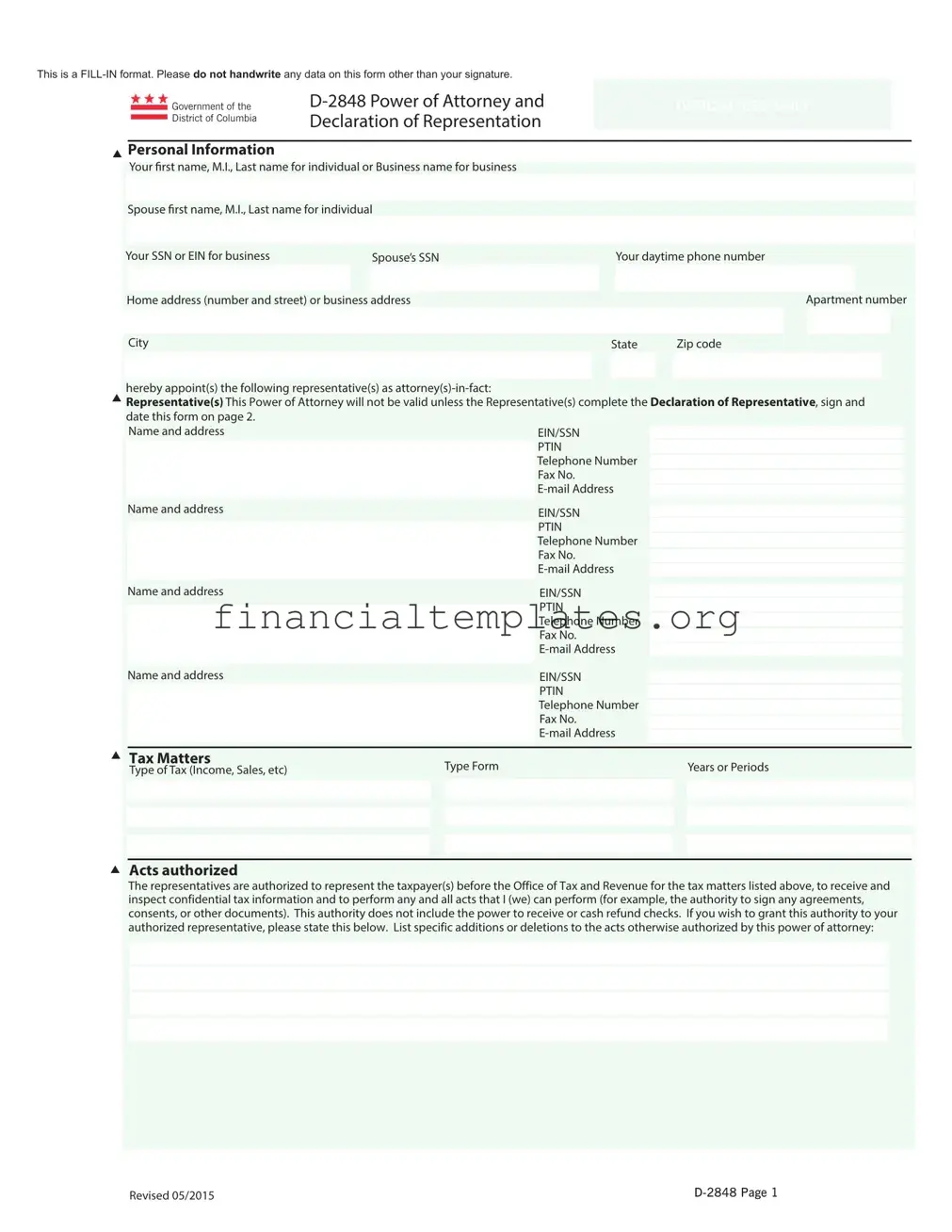The Tax Power of Attorney (POA) Form D-2848 is closely related to the General Power of Attorney form. Both documents grant an individual the authority to make decisions on another's behalf. While the Tax POA D-2848 specifically focuses on tax matters, authorizing someone to handle tax-related issues with the tax authority, the General Power of Attorney provides broader powers across various aspects of an individual’s life, including financial and legal matters.
Similarly, the Financial Power of Attorney form shares characteristics with the Tax POA D-2848 as it allows someone to manage another person's financial affairs. However, the Tax POA is narrowly tailored to tax issues, whereas a Financial Power of Attorney encompasses a wider range of financial actions, such as managing bank accounts and investments.
The Healthcare Power of Attorney is another document related to the Tax POA D-2848, but it diverges in its purpose. It grants an agent the authority to make healthcare decisions on behalf of the grantor, highlighting the distinction in scope compared to the Tax POA, which is strictly limited to tax matters.
A Durable Power of Attorney, much like the Tax POA D-2848, authorizes someone to act on your behalf. The key difference is in its durability; it remains in effect even if the principal becomes incapacitated. This contrasts with the Tax POA, which does not necessarily include such provisions.
The Limited Power of Attorney is quite similar to the Tax POA D-2848 in its specificity. While the Tax POA is focused on tax issues, a Limited Power of Attorney could be designated for any specific area or task, such as real estate transactions, indicating a similarity in the tailored scope of authority granted.
The Child Care Power of Attorney is a specialized form that allows a parent or guardian to grant another individual the authority to make decisions regarding their child's welfare. This contrasts with the Tax POA D-2848’s focus on tax issues, showing how Power of Attorney forms can vary greatly in their application, from child care to financial matters.
The Revocation of Power of Attorney document is directly related to the Tax POA D-2848 as it serves to cancel or invalidate a previously granted power of attorney, including a Tax POA. It is essential for reversing the authority given in situations where it is no longer needed or the relationship has changed.
The Real Estate Power of Attorney provides specific authority to handle real estate transactions on behalf of the principal. This specialization makes it akin to the Tax POA D-2848, as both focus on particular areas rather than offering broad, general powers.
The Vehicle Power of Attorney allows someone to make decisions and take actions regarding the principal's vehicle, such as title transfers and registrations. Like the Tax POA D-2848, it is designed for a specific purpose, emphasizing the variety of Power of Attorney forms tailored to different needs and circumstances.
The Springing Power of Attorney is designed to become effective only under certain conditions, typically when the principal becomes incapacitated. This conditional aspect sets it apart from the Tax POA D-2848, which does not have such a triggering mechanism, demonstrating the flexibility and diverse functionality of Power of Attorney documents.



